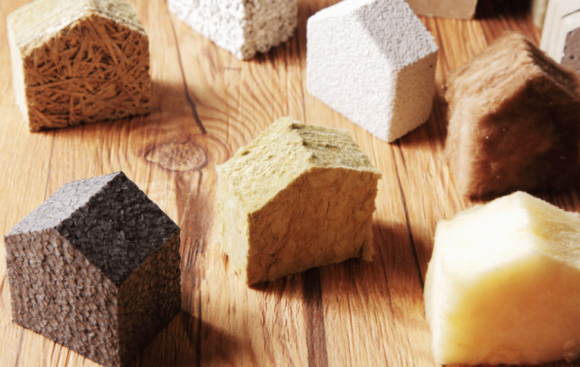Insulation comes in many different forms, from batts to wraps, and panels. Each type of insulation also comes in a variety of sizes and different thermal properties, making it hard to choose which type you need. Here is a list of different types of insulation that can help you choose which one is the right insulation for your home.
Batts
Insulation batts are very popular, with almost every brand on the marketing selling them. Batts, or bulk insulation as it is sometimes referred to, is one of the most known insulation types. They come in a variety of sizes but are all made to fit in either the external or internal walls of a building. They fit between the studs of the framework snuggly and are then covered up by the plaster.
These batts come start with an R-value of R1.0, ranging all the way up to an R6.0 or even higher, depending on the brand. This R-value is what determines how high the thermal properties of the insulation is, thus the higher the number, the higher the protection. If you’re wanting to insulate your home, batts are the most effective way of doing so. They are easy to install so you can make it into a DIY project, or you can get it professionally installed.
Most people go for this option as it is the most known and also cost effective. It can be installed in new builds, but you can also replace old ceiling insulation or underfloor insulation if there is sufficient space to do so. It is an easy upgrade and the best choice for DIY projects.
Wall Wrap
If you’ve ever driven by a new estate and seen all the houses being built, you may have noticed that if they’re at the framing stage, some house may have a foil-like sheet around them. This is actually a reflective aluminium foil that acts as a second ‘skin’ to your home, trapping in the heat so give you extra comfort. It also acts as a barrier between the home and the elements, helping to eliminate draughts. You can read more about wall wraps in one of our previous blogs.
Not everyone realises that the wall wrap is actually super effective at insulating a home and is best used with bulk insulation as extra protection. If you’re building a new house, this is a definite must have. Unfortunately, if you have moved into an older home, there is no way of knowing if a wall wrap was used or not.
Panels
Rigid board insulation, or EPS panels, are a type of insulation that are designed to use in both the walls, floors and roof. They are usually made with some form of fire-retardant expanded polystyrene and laminated with a foil to both sides. This type of insulation is engineered and designed to ensure a quick and easy installation of a non-itchy, fibre free rigid insulation panel that will provide continuous thermal performance for the life of the building. It is suitable for residential, commercial and industrial applications. These types of insulation are popular for installing in wall systems and raised underfloor and even ground floor slabs. They are durable and lightweight, making them a great choice for DIY installation. They are definitely something to keep in mind when looking at insulation options.



